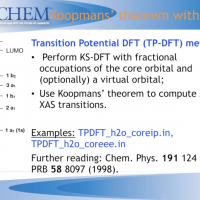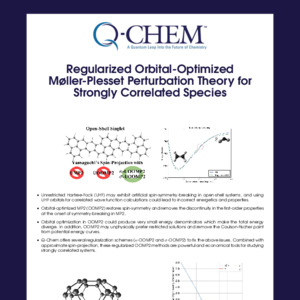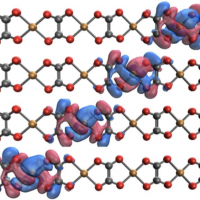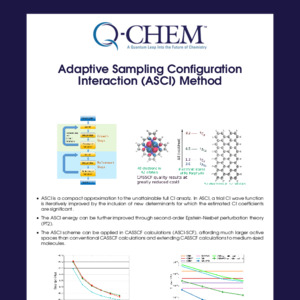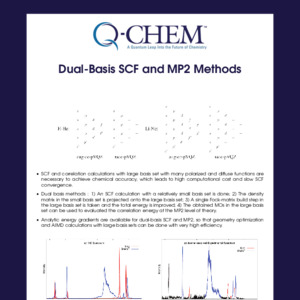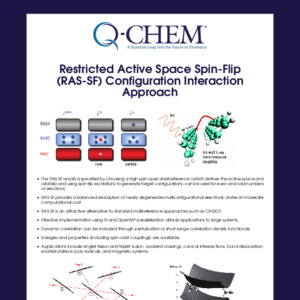Post Hartree-Fock Methods in Q-Chem
For many types of systems, correlation is key. Whether you're determining the spin-orbit coupling of a strongly correlated transition metal complex, or simply need to add a bit of dynamical correlation to improve the accuracy of your results, Q-Chem has you covered. For handling dynamical correlation, we have a variety of perturbative approaches available, as well as coupled cluster and diagrammatic approaches. For those tricky systems where a single reference just won't do the job, consider one of our methods designed for handling strong correlation, such as CASSCF or selected CI.
Møller-Plesset Perturbation Theory
MP2RI-MP2SOS-MP2OO-MP2MP3MP4Dual-basis RI-MP2
Coupled-Cluster and Diagrammatic Theories
CCSDRI-CCSDCholesky-CCSDCCSD(T)EOM-CCSDADC
Methods for Strongly Correlated Systems
RAS-CIRAS-SFSF-TDDFTCASSCFNOCIv2RDMCCVB-SD
Q-Chem offers state-of-the-art tools for treating electron correlation effects, such as Møller-Plesset perturbation theory and coupled-cluster theory. For systems with strong correlation, Q-Chem offers specialty treatments including CASSCF, coupled-cluster valence bond theory, selected CI, RAS-CI, spin-flip, and variational 2-RDM methods.

MP2 Methods
- RI-MP2 energy and gradients
- Dual-Basis MP2
- Optimized-Orbital MP2 improves accuracy for open-shell species
- Latest κ-OOMP2 energies and gradients
Coupled-Cluster, Equation-of-Motion, and Algebraic Diagrammatic Construction Methods
- Enhanced performance on multicore systems
- RI and Cholesky decomposition
- Optional single-precision execution within CC/EOM-CC for improved performance
- Energy, gradient, and properties for CCSD, EOM-EE/SF/IP/EA-CCSD
- Static and dynamic polarizabilities
- Approximate EOM-CC methods for larger molecules
- PCM and EFP embedding for ADC and EOM-CC wave functions
- ADC and EOM methods for core-ionized and core-excited states
Methods for Strongly Correlated Systems
- Restricted active space (RAS): RAS-CI and RAS-nSF methods
- Spin-flip TDDFT
- Diagnostic for strong correlation via regularized OOMP2
- CASSCF energies and gradients up to 40 electrons and 40 orbitals via ASCI
- Non-orthogonal CI
- Variational 2-RDM methods
- Coupled-cluster valence-bond singles and doubles (CCVB-SD)

Want to try Q-Chem?
